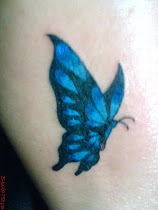
I'd like to share some history about the Kaamatan Festival in Sabah (Copied from www.borneotech.com/culture/cultharvest.html by Benedict Topin). Perharps one day, you may come to Sabah and celebrate it together with us.
1. Introduction
A beautiful country is Sabah Malaysia, land below the wind, land of biodiversity, natural beauty, peace and tranquility, and home of some of the world’s most vibrant and colorful indigenous peoples: the multi-ethnic Kadazandusuns, the Muruts, the Rungus and the Bajaus, who are otherwise known as “the cowboys of the Orient’.
Though many of Sabah’s indigenous peoples have now ventured into the modern way of life and moved to the cities to pursue modern careers, a sizeable number of them still live their ancestral way of life, conscious of their traditional worldviews and practicing their customary laws known as “Adats and Pantangs”.
The Kadazandusuns in particular still have their Priests and Priestesses called Bobolians. They are the authorities on the socio-spiritual and communal life of the Kadazandusuns: the intermediaries between humans and divinities, healers and performers of cultural rites and ceremonies of the human life stations such as birth, marriage, sickness, death and life beyond this world.
In the field of agronomy, they are the guardians of the life cycle of the Kadazandusun staple crop - paddy, and keepers and propagators of various other multi-purpose plants and food resources.
2. Why Kaamatan Festival?
Through the enlightened eyes of the Bobolians the Kadazandusun genesis and divine concept of creation, sin, repentance, love and salvation was revealed as the philosophical foundation of the annual Kaamatan Festival.
First there was nothing but Kinoingan and His wife Sumundu. Out of love, they created man, the universe, heaven and earth, and everything seen and unseen, known and unknown.
In the beginning, all was well in the heavens, and the world was pure and beautiful until Kinoingan’s own son Ponompulan rebelled and corrupted the hearts and minds of mankind on Earth, seeking to use all creations as tools and agents of his evil designs.
Disappointed and angry, Kinoingan banished Ponompulan from the heavens and cast him to the Underworld Kolungkud.
Then to discipline mankind for their sinful ways, Kinoingan delivered the seven plagues, the last of which was a prolonged severe drought followed by seedlessness and famine threatening to destroy the earth.
3. The Seven Scourges
1. The First Scourge: War over lost Tataba & Kolian Pinogitigurasan
2. The Second Scourge: Plague Rapit
3. The Third Scourge: Dispersion & Migration Minogiurias
4. The Fourth Scourge: Locusts Minonombilalang
5. The Fifth Scourge: Deluge Minalagob-podluyud
6. The Sixth Scourge: Drought Minabpagadau
7. The Seventh Scourge: Seedlessness and Famine Pudsoh om Lous
4. Redemption
Out of compassion, Kinoingan’s Daughter Ponompuan entreated Her Father’s mercy to forgive humankind and consented to Kinoingan’s design that She be the sacrificial symbol of the greatest love of all. This in essence is socio-spiritual redemption within the traditional worldviews of the Kadazandusuns.
Kinoingan thus sacrificed His only Daughter so that the people could have food. Her body parts were cut to pieces and planted as seeds and became food resources of the world. Her flesh and blood became red rice, and her sacred spirit became the Seven-in-One, the Rice Soul, fondly called Bambarayon by the Kadazandusun Bobolians.
5. Huminodun in Bambarayon and Bambarayon in Paddy
Bambarayon is believed to be embodied in all parts of the paddy plant and its related products. During the course of its season it is inevitable that paddy is damaged and parts become physically and spiritually severed and strayed from the Seven-in-One msytical Paddy manifestation of Huminodun: Som-puun, Son-guas, Son-rawoh, Son-gi-ih, Son-wawar, Som-putul and Som-bilod. This can happen naturally, unintentionally and innocently or through abuse and neglect.
6. Why Magavau?(47k)
Thus, immediately after harvest, Bambarayon’s severed and dispersed mystical components have to be brought home, to be appeased, healed and re-united again as one. So Bobolians perform the Magavau and Modsu’ut Ceremony, traveling through the levels of the spirit world to pursue and rescue the strayed parts of mystical Bambarayon. Whole again, Bambarayon rejuvenates and ensures the bounty of the next harvest. To thank Kinoingan for Bambarayon and to commemorate Huminodun’s loving sacrifice, the commemorative Kaamatan Festival is thus held.
As the paddy grains are children to Bambarayon, the Bobolians view the Kaamatan Festival celebrants as children of Huminodun and alternatively children of Bambarayon.
Toguruon: The Seven-in-One Spirit, attributes and symbolic objects of fully integrated holistic Bambarayon.
Zandi Rosinim Pigis (once a student Bobolian) from Kampong Pantai Tambunan shared that the following are the normal objects used to symbolize the existence of the Seven-in-One Spirit of Bambarayon:
NAMES (SYNONYMS) / ATTRIBUTE / SYMBOL
1. Pohinopot (Ohinopot)/ Self realizing / Dokuton (Clay)
2. Pohinomod (Ohinomod)/ Self determining / Gagamas (Knife)
3. Pokotiru (Otiru) / Self preserving / Pangasaan (Sharpener stone)
4. Potingudan (Oudan) / Self generating / Solunsug (Bamboo conduit)
5. Podihuntun (Ompidot) / Self integrating / Pinudsu- pudsu (Paddy mound)
6. Polikambang (Olikambang) / Self copious / Nangkob (Paddy barn replica)
7. Potinoud (Otinoud) / Self purifying / Rilibu (Winnower)
The above symbolic objects are considered to correspond to the seven spiritual attributes of Huminodun in Bambarayon. Bits and pieces of the above objects are wrapped together inside a black cloth container and hung together with the seven ears of paddy on a bamboo pole to be left in the paddy fields until the harvesting is finished. This symbolizes the ideal integration of all the seven spiritual components of the mystical body of Huminodun in Bambarayon and is referred to as Toguruon meaning “the One that many join for completion and fulfillment”. Essentially, this is the holistic rice soul (Sunduan do Parai), Bambarayon in its Seven-in-One complete form. This is the reason why the Bobolians have recommended that the Toguruon be used as Symbol of the Kaamatan Festival. As soon as harvesting is completed the Toguruon is put inside a basket, brought home and placed on top of paddy tangkobs or torutips granaries.
8. Kaamatan Rites
Through the Kaamatan Rites, the Kadazandusuns maintain their socio-spiritual practices of:i) Momulangga to establish and maintain peace and harmonyii). Miulung to share their harvest and express their self-determination;iii) Magavau & Moginakan to receive holy communion by consuming new rice and drinking new rice wine, which in essence is Divine Huminodun herself;iv) Mominodun to beatify Huminodun in Unduk Ngadau;v) Monugandoi to sing praise and thanksgiving to Kinoingan;vi) Monoguli & Monolimbagu to renew and live a better way of life, andvii) Mononglumaag to usher health and prosperity.
By the observance of the principle of kakatiu, every Kaamatan Festival celebrant must feast according to his or her needs, and forbidden to glut and waste any of the offerings served.
To waste food and/or to get drunk and lose one’s composure during Kaamatan Festival is regarded as dishonor and sacrilege to Huminodun for which the guilty will have to face both the Kadazandusun Hukum Adat (Traditional Laws) and socio-spiritual justice from Libabou.
Over the years, the Kaamatan Festival has evolved and transformed into an epitome expression of the multi-cultural souls of the indigenous peoples of Sabah. Throughout the month of May, Kaamatan celebrations are held annually at the family, village, district and State levels.
9. Kaamatan Festival Month Launching
On May 1st of each year, the Kaamatan Festival Month of May is launched from a pre-chosen district in Sabah. This ensures the participation in action by the numerous ethnic communities within and around the Kaamatan launching district to promote their unique cultural heritage as well as multi-cultural peace, understanding and harmony.
Comes 30th and 31st of May, Sabah’s indigenous peoples, domestic and foreign tourists, and people from all walks of life commune at the Cultural Unity Center (Hongkod Koisaan) for the final days of the Kaamatan Festival celebration.
The natives put on their finest traditional costumes displaying a rich potpourri of cultural attires, designs, motives and colors.
Hands reaching hands in friendship, all celebrants, guests and visitors alike are welcomed; new relationships are established, while past and current brotherhood are renewed and further strengthened among peoples of all races, creed and cultural traditions in the true spirit of Kaamatan.
11. Kaamatan Festival at National Level
The year 2001 of the new millennium marks yet another milestone in the Kaamatan Festival’s history. For the first time Kaamatan Festival is being celebrated at the National Level with financial allocations from the Federal Government. It now depends on all Malaysians to make Kaamatan as the newest opportunity and venue for the multi-cultural expressions of their harmonious unity in diversity at national level.
12. National Kaamatan Festival Open House
Besides this the Federal Government has since last year also begun to organize the National Level Kaamatan Open House celebration, where local culinary delights, beverages, cultural arts and performances continue to be encouraged to be promoted.



















Kristen_Stewart_5.jpg)
























